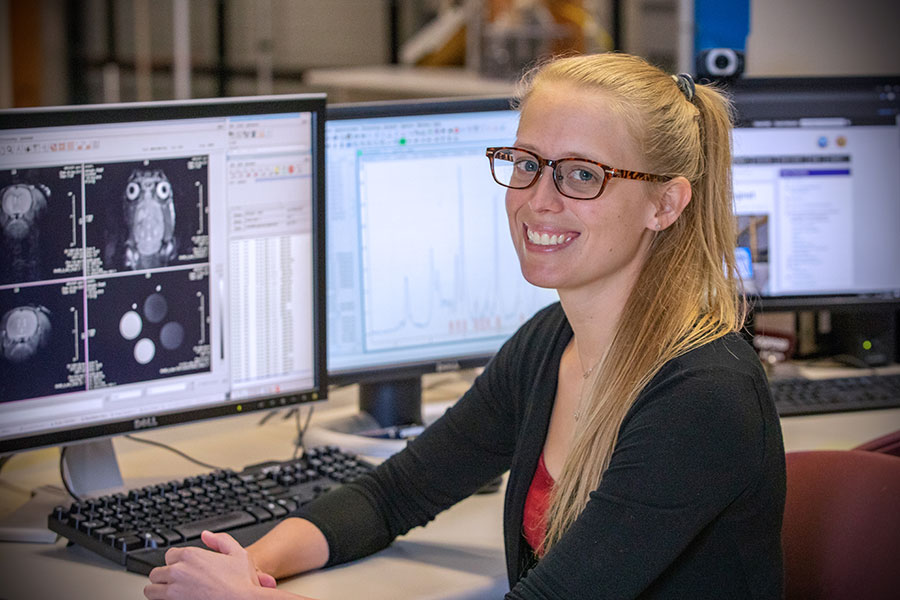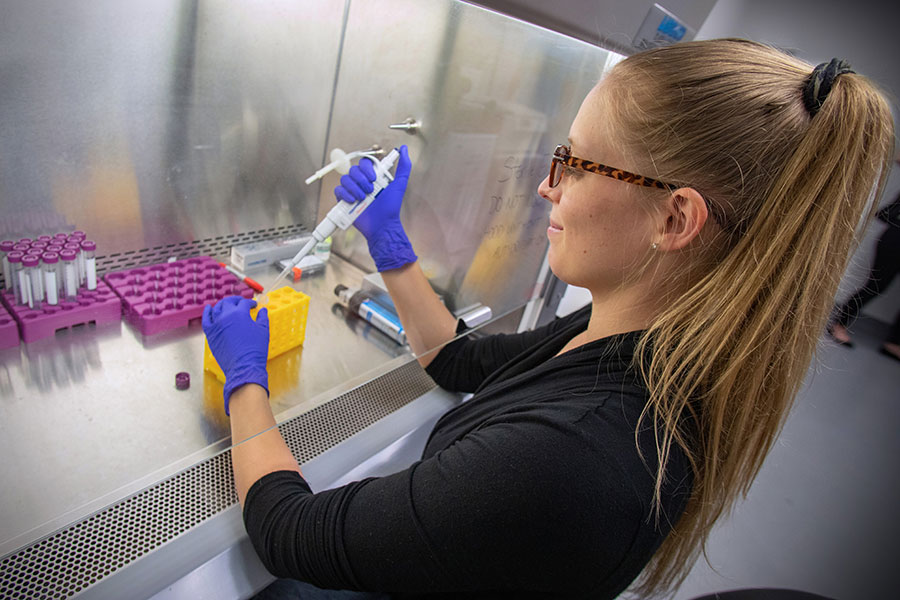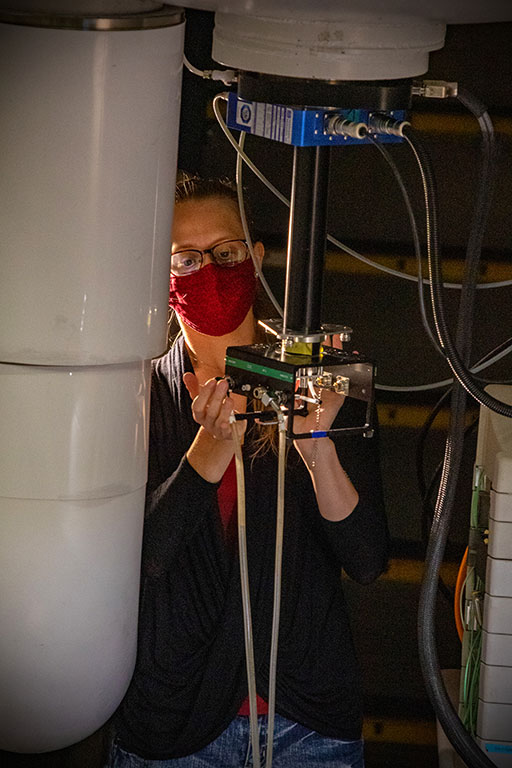
A biomedical engineering student in the FAMU-FSU College of Engineering has received a new predoctoral fellowship from the National Institutes of Health (NIH) to conduct research at the National High Magnetic Field Laboratory.
Shannon Helsper was awarded the Ruth L. Kirschstein Predoctoral National Research Service Award. She’ll receive $112,288 over the course of three years to cover tuition and fees and other costs associated with her research, which investigates the healing effects of stem cell therapies in stroke victims.
“An ischemic stroke occurs when blood flow is cut off to a certain area of the brain,” Helsper said. “This causes a multitude of biological processes in that region, and using magnetic resonance imaging and spectroscopy (MRI/S), we can capture what some of those processes look like.”
Cell therapies, particularly those employing human mesenchymal stem cells (hMSC), are the focus of numerous clinical trials that seek to capitalize on the potential therapeutic effects of specific cell treatments that play a role in regulating the peripheral and central nervous systems.
Helsper’s research aims to determine if the presence of hMSC in a region where blood flow has been reduced is essential to healing. Helsper also wants to know if the delivery of extracellular vesicles secreted from hMSC, specifically those known as exosomes which play a role in the regulation of cellular and physiological processes, alone could improve the outcome.
“Essentially, what I’m interested in is looking at hMSC and how they can be used in therapy,” Helsper said. “Other studies have already shown that they can be very beneficial, but I’m interested in both the cells and their secretions, particularly exosomes. I’m comparing the effective tissue recovery stemming from exosomes alone and the cells themselves using MR imaging and spectroscopy.”

To assess these questions, Helsper examines several hMSC derived therapies. Once the stroke is induced, Helsper injects the therapy and tracks the progression of tissue recovery over multiple days using the 21.1 T magnet at the NHMFL.
“There’s a huge sodium influx that occurs as a result of ischemic stroke followed by a return to healthy levels after an effective treatment, all of which is measurable with MRI. We can also look at the evolution of brain metabolite concentrations using MRS. This is an interesting method because you can inject these therapies into a model of ischemic stroke and then measure sodium and metabolite levels over an extended time period. MRI/S represents a huge advantage in this respect,” Helsper said.
Helsper is no stranger to the National High Magnetic Field Laboratory. After graduating from Auburn University with a degree in cellular and molecular biology, she moved to Tallahassee in 2016 with the intention of starting a graduate program in engineering. In the meantime, she worked at the NHMFL as an MRI Animal Technician, where she optimized skills applicable to her current research.

“It’s fantastic to have these facilities here and for graduate students to also have access to them,” Helsper said. “We get to use equipment that no one else in the world is using unless they come specifically to the MagLab, which is exciting. That experience has been great for graduate school because I learned a lot that is completely applicable to my research now.”
As a student who has used her undergraduate degree in biology to influence a career in biomedical engineering, Helsper praises the multidisciplinary work that FSU promotes.
“I came from a biology background and incorporated it into engineering, so I’m a huge advocate for interdisciplinary work, particularly in translational research,” Helsper said. “I think both the FAMU-FSU College of Engineering and the NHMFL really highlight that necessity, because both facilities do a great job of creating interdisciplinary work.”
For more information about the FAMU-FSU College of Engineering, visit eng.famu.fsu.edu. To learn more about the National High Magnetic Field Laboratory, visit nationalmaglab.org. For more information about the NIH Predoctoral Fellowship or similar awards, visit the Office of Graduate Fellowships & Awards, ogfa.fsu.edu.




